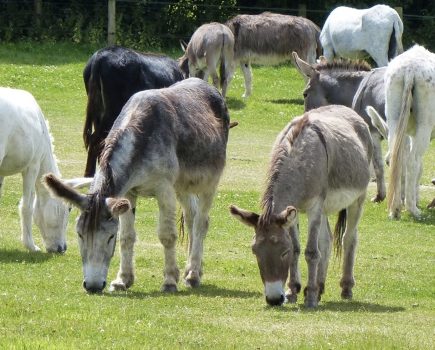What diseases are problems in young goat kids? How do I treat and prevent them? Anke Sieker reports (Photo: Benji Jones, from Chuckling Goat in Wales, with some of their animals: www.chucklinggoat.co.uk Photo courtesy Janet Baxter)
If the dam has been vaccinated with a clostridial vaccine three weeks prior to kidding and the kid(s) have had a good amount of maternal colostrum the two most common of these diseases – tetanus and enterotoxaemia – are unlikely to be a problem. Once the passive maternal protection wears off – after about 8 weeks of age – the kid(s) should be receiving the initial double dose of Lambivac four weeks apart.
Kids are susceptible to coccidiosis – all adult goats have coccidia in their system and these are excreted as sporulated oocysts into the environment. Young kids build up their immunity over the first few weeks of their live, but outbreaks do happen – usually when kids are between four weeks and three months old. Infection can occur both indoors and while out on grass. Coccidia survive on the soil over winter, once an outbreak has occurred on your farm it is likely to be repeated in future years. The first signs are usually no appetite, and then some evil smelling diarrhoea. Quick treatment of the whole group of kids with Vecoxan (active ingredient: Diclazuril) – added to their milk bottles or as a drench – is important, and completely painless for the kids. I have found that it’s usually the kids that had not had their full fill of colostrum are most likely to succumb. Their pens will also need to be cleaned thoroughly.







